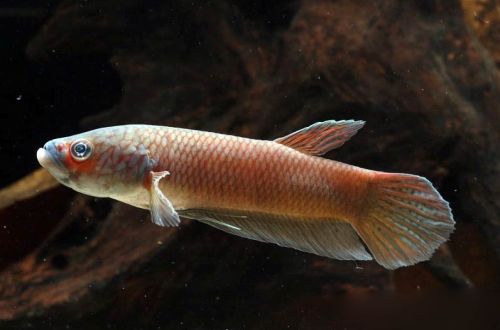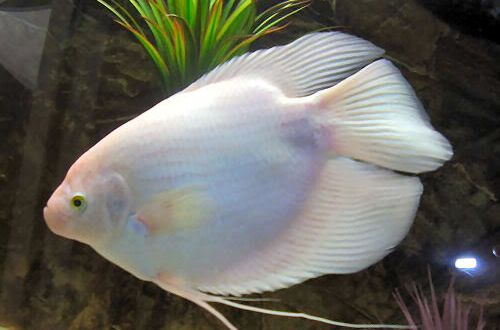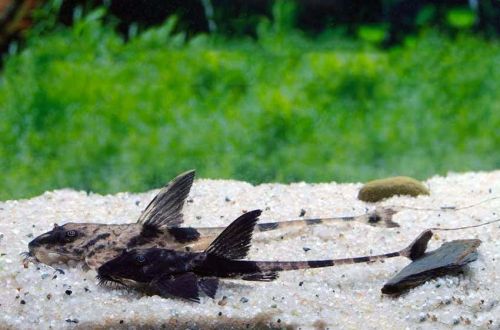
Cockerel Ideas
Betta Ideas or Cockerel Ideas, scientific name Betta ideii, belongs to the Osphronemidae family. The fish is named after Takashige Idei, a fish collector from Borneo who introduced many new species to the aquarium trade. Not the best choice for a novice aquarist, since when buying it is necessary to take into account the peculiarities of intraspecific relationships, and when keeping it, maintain the aquatic environment in a rather narrow acceptable range of hydrochemical values and temperatures.

Contents
Habitat
Comes from Southeast Asia. Wild populations are found in the southern part of the island of Borneo, belonging to the Indonesian province of Kalimantan Selatan and the small neighboring island of Pulau Laut, separated by a narrow strip of water known as the Laut Strait. Official sources mention that the fish was collected in the coastal basins of the rivers flowing into the strait. Inhabits flowing reservoirs with clear water, flowing among tropical rainforest. The substrates consist of sand and stones mixed with fallen leaves and twigs.
Brief information:
- The volume of the aquarium – from 80 liters.
- Temperature – 20-26°C
- Value pH — 5.5–7.5
- Water hardness – 1–10 dGH
- Substrate type – any dark
- Lighting – subdued
- Brackish water – no
- Water movement – little or no
- The size of the fish is 9–11 cm.
- Food – any food
- Temperament – peaceful
- Content – singly or in pairs together with other species
Description
Adults reach a length of 9–11 cm. The fish have a slender, strong body with small fins. Males grow larger, look more elongated, and there are reddish shades in the color. Females are somewhat graceful, but do not differ in the fury of flowers.
Food
In nature, it feeds on small insects and other invertebrates, zooplankton. In the artificial environment of aquariums, they have successfully adapted to accepting alternative products. The daily diet can consist of popular dry, frozen and live foods.
Maintenance and care, arrangement of the aquarium
The optimal size of the aquarium for one pair of fish starts from 80 liters. Acclimatized Betta Ideas are not demanding on the choice of design and can live even in a half-empty tank, where they are often found at breeders and pet stores. Such conditions are acceptable, but they cannot be called ideal. In a home aquarium, several things should be considered that will make the fish feel more comfortable: a subdued level of lighting and the presence of shelters, for example, from snags and thickets of plants. The layout and decor elements are selected at the discretion of the aquarist, based on his imagination and capabilities.
As for the aquatic environment, there is no freedom of choice here. Fish need very specific conditions – soft, slightly acidic water with low concentrations of organic waste, in this case, food leftovers and excrement. Maintaining biological balance depends entirely on the regular maintenance of the aquarium and the smooth operation of the equipment.
Behavior and Compatibility
Belongs to the group of fighting fish and their behavior justifies this affiliation. Males compete with each other for the attention of females and often arrange skirmishes, peculiar fights. In a small aquarium, the winner is in the lead, and the loser will be forced to take refuge on the periphery, subjected to periodic attacks. It is worth noting that in cramped conditions, females who were settled much later than males or they are from other groups may also be persecuted. If the tank is large, then the problem will not be so acute. In relation to other species, they are surprisingly peaceful, getting along well with non-aggressive fish of a comparable size.
Breeding / breeding
Unlike most other fish, Betta Ideas hatch their eggs in their mouths, and do not throw them on the ground or among the thickets of plants. During breeding, the fish perform a kind of “hug dance”, during which the eggs are fertilized. At the end of the incubation period, fully formed fry appear, ready to consume microfeed. Juveniles may be near their parents, but in a common aquarium, other fish will certainly try to eat them. Therefore, fry should be moved to a separate tank with identical water conditions.
Breeding looks like a simple task if Bettas are in the right environment and get quality food. However, there is one caveat – the male and female form a pair only if they grew up together. When adult males and females are randomly selected, for example, purchased from different pet stores, then, as noted above, the male is likely to start chasing the female, perceiving her as a competitor.
Fish diseases
The cause of most diseases is unsuitable conditions of detention. A stable habitat will be the key to successful keeping. In the event of symptoms of the disease, first of all, the quality of the water should be checked and, if deviations are found, measures should be taken to correct the situation. If symptoms persist or even worsen, medical treatment will be required. Read more about symptoms and treatments in the Aquarium Fish Diseases section.





